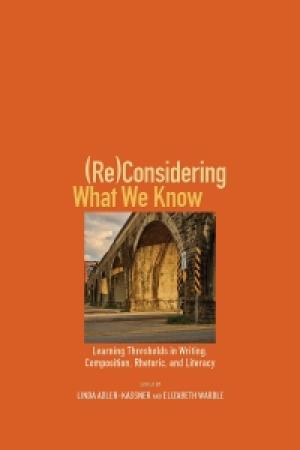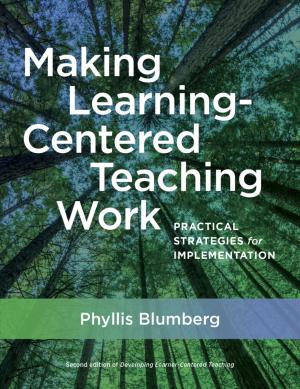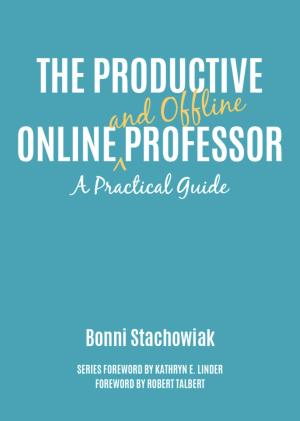Resources

We are in the midst of unprecedented social upheaval. Many colleagues are being asked to migrate their teaching formats to online learning and curtail their interactions with learners to the digital spaces. Even so, I believe our roles as teachers can assist our students as we move through this crisis, together. Teaching during crisis can seem as if we are taxed beyond our capabilities, pushed beyond our job descriptions, and stretched beyond our capacities. According to the scientists and medical professionals, this particular crisis will last longer than a few days. The pandemic which grips our nation, and the world, will likely have a duration of months. We do not know how many months. We are likely participating in a paradigm shift in higher education. Before our very eyes, this crisis is likely causing long-term societal shifting. The abrupt behavioral shifts of the society are and will continue to affect the patterns and habits in our schools and classrooms. Practices of social distancing will likely linger in our society after the threat of the pandemic has been eliminated. The advantages of online learning will become more utilized as the threat of human proximity lingers in our shared memory. In the midst of so much abrupt and radical change - still yourself. Ask yourself not to panic, but to find balance and calm. The health, healing and wholeness of our schools and communities will require all of us to be attentive to this situation. Resist the impulse for “business as usual.” In these emotionally charged times, teachers are looked to as role models, as responsible people who set the tone and tenor in our classrooms of students as well as in our own families and communities. We are called to be a non-anxious presence even when we are struggling in anxious times and with our own personal anxieties. Faculties are being asked to immediately shift from a face-to-face format of course design to online learning. Teachers are having to quickly redesign 1,2,3, and in some cases, 4 courses to an online format in a matter of days. Migrating courses from face-to-face formats to online is not impossible, but it takes thought and preparation. Returning to the basics of your course seems key in this unusual/unprecedented situation. Format affects teaching, but it does not have to diminish or weaken your standards. Resist surrendering to your own frustration. Relax your typical standards for what “has to be taught.” A key is to keep your students engaged and keep your learning aim and goals as your guide – there are many, many ways to get to any one of those goals. What do you do? Do enough and do it well enough – it will not be how you planned, but it will be good enough. Do new and needed activities with your students. Remember the learning activities maybe new to you, but likely not new to your students. Do differently than you planned. Migrating from one format to another is no small task. Lean into the difference and know that teaching differently does not mean that your teaching will become inferior or bad. Change does not have to compromise quality. Remind yourself of the metaphor you employ when you think of yourself as a good teacher – in the best of times. Typical metaphors or similes for the good teacher are: gardener, light bearer, guide, architect, chef, builder, dancer. The list could go on. Each of these metaphors has in its wider narrative and iconographic knowledge the role of teacher in a crisis. For example, the gardener knows ways to combat drought or flood; the light bearer knows ways to keep the wicks trimmed and burning; the guide knows alternative routes should one path be blocked or destroyed; the chef knows how to save a ruined dish; the builder knows how to correct architectural errors; the dancer knows how not to get caught unaware when the tempo of the music suddenly changes. In this moment of unimaginable circumstance, use your imagination to encourage yourself for the ways you need to adapt your teaching and teaching persona. Refrain from allowing your classroom time (online or face-to-face) to dissolve into conversation exclusively about the health crisis. Continue to teach your course, even in its modified and adapted forms. Students are still enrolled in degree programs and still seeking graduation. Stay focused upon your course topics. It is likely that concentrating upon something other than the crisis will be refreshing to you and your students. Consider that this is also a time of opportunity, adventure, and new learning. The foil to crisis is creativity. Creativity is the tool of innovation and invention. Let go of that which would have you stay mired in established ways and current semester plans. Allow yourself to think new thoughts about your own old, rehearsed modes of teaching. Let the tropes go! Suspend judgement about the fictitious standard of teaching which no longer applies in this peculiar moment and let yourself be creative. Finish the semester strong by finding ways of engaging with your students on the course themes – it could be that straight forward! In this moment of social distancing, hand washing, quarantine, suspicion, and fear continue to take notice of your students. Inherently, teaching is a communal act. Even in online classrooms, pedagogical intimacy can encourage, strengthen, and hearten students. Students depend upon our words of assurance, our gestures of care, our attitudes of warmth and belonging. Be empathic with your students, remembering that they too are in crisis. The Wabash Center has provided a dedicated page for online teaching - https://www.wabashcenter.wabash.edu/resources/teaching-online/. We have also published podcasts of many interviews with colleagues who are well versed in online learning https://www.wabashcenter.wabash.edu/resources/videos/.
What if, rather than a burden, this moment is an adventure for teachers? Dr. Beverly McGuire (University of North Carolina, Wilmington) provides insights for determining how to move forward with the rest of the semester online.
In this moment of upheaval as we switch to online learning – don’t panic! Dr. Richard Ascough (Queen's University) helps colleagues know what questions to ask for online learning when the professor only has a moment to make the switch.
The pandemic of 2020 is changing teaching. With little to no notice, faculties have been asked to switch from face-to-face formats to teaching online. This conversation with Dr. Kimberleigh Jordan (Drew University) and Dr. Shively Smith (Boston University School of Theology) provides advice, perspective, and insights for this moment of immediate adaptation. We are glad these colleagues joined us by phone.

Naming What We Know: Threshold Concepts of Writing Studies, published in 2015, contributed to a discussion about the relevance of identifying key concepts and ideas of writing studies. (Re)Considering What We Know continues that conversation while simultaneously raising questions about the ideas around threshold concepts. Contributions introduce new concepts, investigate threshold concepts as a framework, and explore their use within and beyond writing. Part 1 raises questions about the ideologies of consensus that are associated with naming threshold concepts of a discipline. Contributions challenge the idea of consensus and seek to expand both the threshold concepts framework and the concepts themselves. Part 2 focuses on threshold concepts in action and practice, demonstrating the innovative ways threshold concepts and a threshold concepts framework have been used in writing courses and programs. Part 3 shows how a threshold concepts framework can help us engage in conversations beyond writing studies. (Re)Considering What We Know raises new questions and offers new ideas that can help to advance the discussion and use of threshold concepts in the field of writing studies. It will be of great interest to scholars and graduate students in writing studies, especially those who have previously engaged with Naming What We Know. (From the Publisher)

The notion that learning is not an outcome of teaching is a challenging conundrum to those who teach. Perhaps for two reasons, first, it’s counter intuitive, and second, it begs the question, “Well then what am I teaching for if not to bring about learning?!” While teaching and learning are two sides of the same coin, the reality is that it is possible that what learners actually learn in a given lesson or course has little connection to what the teacher does or is trying to teach. We can imagine that some of this has to do with poor teaching. But some of it has to do with other complex dynamics of learning, including motivation, confirmation bias, attentional states, and capacities. A teacher who does not understand principles of learning, neglects to prepare well-designed learning outcomes, fails to ensure student engagement, and fails to apply sound instructional practices will likely not bring about meaningful learning. But the concept that “learning is not an outcome of teaching” goes deeper than that. The idea has to do with the fact that learners need to be, and are, active participants in their own learning. Regardless of our particular educational intent as teachers, students bring to the learning experience their own expectations, felt needs, goals, assumptions, frames of reference, and limitations related to the learning experience. Those factors often are more determinative of what will actually be learned than will anything the teacher intends or works toward. Experienced congregational ministers are familiar with this phenomenon. Regardless of how well they craft a sermon and despite how intentional they are in being clear about the purpose, function, and objective of the sermon, the fact is that the “real” sermon is the one that is heard by each parishioner in the pew and not the one preached from the pulpit. The preacher may be preaching the one sermon he or she prepared for Sunday, but there will be as many sermons heard as there are people in the sanctuary. This phenomenon always makes for interesting conversations at the door as the pastor greets the parishioners. If five people comment on the sermon on their way out, the preacher will be left wondering how and when it was that they heard those five different things in the sermon! The concept that learning is not an outcome of teaching can challenge certain educational approaches, like “teaching by telling,” lecturing, or an exclusive diet of direct instruction. If learners are active agents in their own learning, then we need to use those educational approaches that tap into what students bring to the learning experience. Ways to Ensure Better Outcomes The best way to ensure better learning outcomes is to design for student engagement. • Facilitate ways for students to discover their own learning and insights • Allow students to negotiate their own learning goals and facilitate ways for them to achieve them • Focus on problem-posing (which requires data gathering, observation, analysis, and interpretation) as well as problem-solving • Cultivate student's capacity for learning how to ask questions rather than getting good at answering teacher’s questions • Facilitate ways for students to construct their knowledge rather than providing them with information • Help students articulate their prejudices and bias • Help students uncover and identify their misunderstandings • Help students identify their resistance to new ideas • Allow students the options of approaching learning in the ways (modalities) they need. • Ensure that students apply knowledge to demonstrate learning, including through non-academic venues.
A tool used for implementation of Universal Design for Learning, a framework to improve and optimize teaching and learning for all people based on scientific insights into how humans learn, from CAST (a nonprofit education research and development organization that works to expand learning opportunities for all individuals through Universal Design for Learning). These guidelines offer a set of concrete suggestions that can be applied to any discipline or domain to ensure that all learners can access and participate in meaningful, challenging learning opportunities.

This is a substantially expanded and enhanced revision of Phyllis Blumberg’s acclaimed and bestselling book, Developing Learner-Centered Teaching: A Practical Guide for Faculty (Jossey-Bass, 2009). This easy to follow how-to-guide provides faculty with both a thorough introduction to this evidence-based approach to teaching and practical guidance on how to progressively implement it to strengthen the impact of their teaching. It demonstrates how they can integrate learning-centered teaching into their classroom practice without sacrificing content and rigor, and how to positively engage students in the process by demonstrating its impact on their mastery and recall of key concepts and knowledge. An added outcome, given that learning-centered teaching is correlated with improved student learning, is the resulting assessment data that it provides faculty with the measures to meet the increased demands by accreditors, legislators and society for evidence of improved teaching and learning outcomes. Phyllis Blumberg demonstrates how to use rubrics to not only satisfy outside requirements and accreditation self-studies but, more importantly, for faculty to use for the purposes of self-improvement or their teaching portfolios. She provides examples of how the rubrics can be used to ascertain whether college-wide strategic plans for teaching excellence are being met, for program review, and to determine the effectiveness of faculty development efforts. The book includes the following features: - Boxes with easy-to-implement and adaptable examples, covering applications across disciplines and course types - Worksheets that foster easy implementation of concepts Rubrics for self- assessment and peer assessment of learning-centered teaching - Detailed directions on how to use the rubrics as a teaching assessment tool for individuals, courses, and programs - List of examples of use classified by discipline and type of course Phyllis Blumberg offers Making Learning Centered Teaching Course Design Institutes and workshops on this and other teaching and assessment topics. Half day to multiple day modules. (From the Publisher)

What does it mean to be a productive professor in higher education? What would it feel like to have more peace and productivity? To have nothing fall through the cracks? The Productive Online and Offline Professor is written for today’s busy higher education professional. Through an exploration of what it means to make work meaningful, this book offers practical strategies and tips to support higher education professionals in efficiently managing and effectively using a wide range of technologies and productivity tools. Higher education instructors will find this guide helps them to fulfill their teaching roles with excellence and to build engaging relationships with students while also successfully managing other priorities in their professional and personal lives. The Productive Online Professor assists those who teach online and blended courses with managing their personal productivity. Faculty are often expected to provide support and feedback to learners outside of normal work hours in non-traditional classes. Programs that are designed with more asynchronous content may cause faculty to perceive that it is difficult to ever press the “off button” on their teaching.The author offers guidance and suggests software tools for streamlining communication and productivity that enable faculty to better balance their lives while giving rich feedback to students. Part 1 addresses the challenges in defining productivity and presents a working definition for the text. Part 2 describes the ability to communicate using both synchronous and asynchronous methods, along with ways of enriching such communication. Part 3 describes methods for finding, curating, and sharing relevant knowledge both within one’s courses and to a broader personal learning network (PLN). Part 4 examines specific tools for navigating the unique challenges of productivity while teaching online. It includes ways to grade more productively while still providing rich feedback to students. Part 5 shares techniques for keeping one’s course materials current and relevant in the most efficient ways possible. The Productive Online Professor is a practical guide for how to provide high quality online classes to diverse students. This book shares specific technology and other tools that may be used in charting a course toward greater productivity. It is intended to be a professional resource for fulfilling our roles with excellence and joy, while managing other priorities in our personal and professional lives.(From the Publisher)

As a professor, I am caught in the midst of a revolutionary period in education and technology. Education has had a slow building relationship with technology and has even had a love-hate relationship with the use of social media, despite its impenetrable growing prevalence in our lives. For younger generations, social media has gone from phenomenon to cultural norm, and the debate regarding whether or not to integrate social media into the classroom becomes more relevant. Social media is a pandora’s box of opportune connection, knowledge and dangerous pitfall. Though you can live without it, living with it in the digital age puts you among the same pace with the rest of the world. It holds everything that the modern world relies on for information, culture, entertainment and social activity. Aside from the obvious risks of using social media, like distractions and negative digital spaces, I have always been a vocal advocate for using social media in the classroom. As classrooms are going more digital and even more online courses are being taught, I believe that social media becoming a necessary tool to enhance student engagement, teaching methodology and learning development. I can share social media news that is relevant to the class materials or have students find relevant materials from social media which are pertinent to the content of the class. This can be done intentionally in the classroom, but unintentionally, it occurs rather frequently. This is due to the fact that students are already on social media and are sharing, following and seeking information which may help them in their studies. Social media is used by students for their assignments, for support, and for information. Since the students are already on social media, at times it is important to meet them where they are. We only have to look briefly at the major paradigm shift in education as a whole. Social media and technology have become the primary tool for personal education in the past decade, yet when you examine the educational and academic landscape, the archetypical classroom setting with a student listening to the teacher’s lecture has not changed all that much. The conventional antics in education are as always, a far step behind. Students now are gravitating towards learning digitally, where the preference to engage in information and material at an autonomous pace and in a self-directed manner becomes a greater expectation. Younger generations have grown up learning in such a manner, and its elevated efficiency leads me to believe that it’s not the students that need to adapt to educators, but rather the educators that need to adapt to them. Students today can and should expect to learn anywhere they are any time they want; they should be able to have the option to have a diverse learning source, not just the formal teacher and peer, but the global environment of classrooms filled with other teachers and peers. This fosters the opportunity for energetic co-learning and co-creation, inciting more dissemination of information for a democratic audience in a digital space. This is one of the greatest values of social media: its openness and interactiveness. It breaks down the walls between student and educator, allowing for all to be both simultaneously. We cannot slow down the consumption of information online, nor can we slow down how it is disrupting the traditions of education. As a result, rather than being the owner of knowledge I feel my responsibility adjusting towards being a facilitator and guider of knowledge. When I post on social media, I feel as though it is a conscious act of preparing my students to understand how to use social media as an educational, positive and professional tool in the modern climate. Information can quickly be disseminated on social media as the classroom goes beyond the walls of a classroom. Furthermore, it allows my students the chance to send me questions, while also keeping them informed and updated on what is occurring in the classroom. This unique avenue generates new forms of engagement that I would not otherwise establish in the typical classroom setting. The future of education will not be limited to physical spaces and classroom doors. Students and non-students alike should be able to learn in relation to updated current technology that allows for learning without bounds. As educators and students, we need to welcome this philosophy and utilize social media for a progressive education and a right step towards the future. You can follow Grace Ji-Sun Kim on Twitter, Facebook, Instagram and LinkedIn.